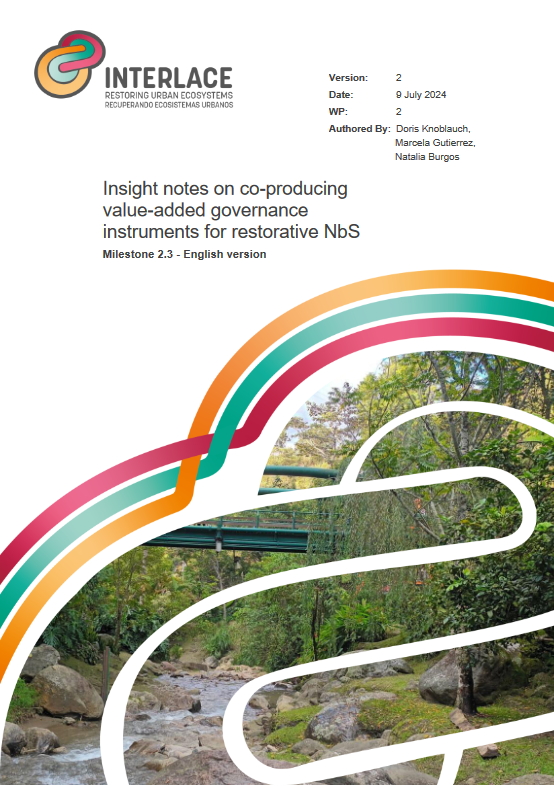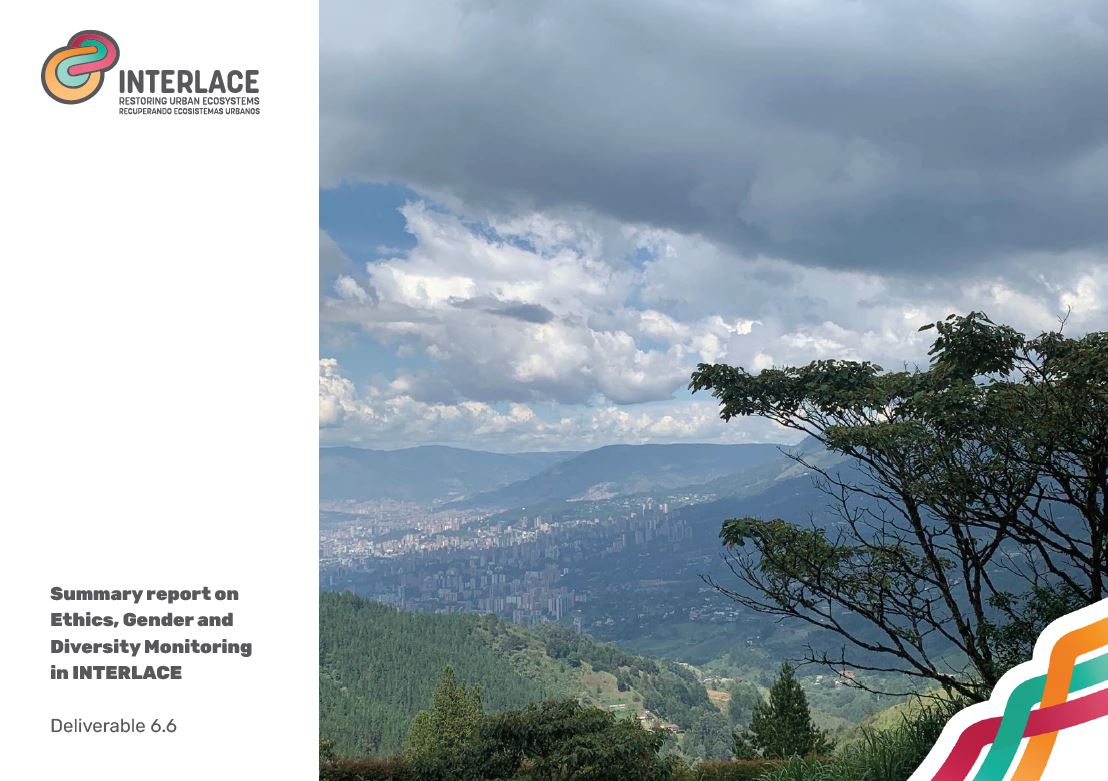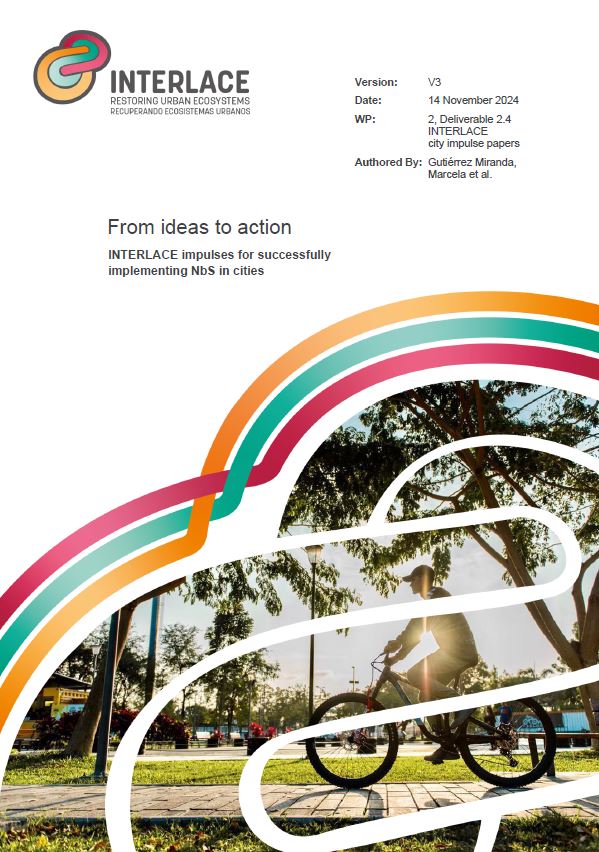Integrating Nature-Based Solutions in Policy and Planning
Findings and Lessons from INTERLACE Cities
- Publication
- Citation
Gutiérrez Miranda, Marcela; Felthöfer, Charlotte; Knoblauch, Doris (2024). Integrating Nature-Based Solutions in Policy and Planning: Findings and Lessons from INTERLACE Cities. Transversal City Impulse Paper. INTERLACE Deliverable 2.5.
The report ‘Integrating Nature-Based Solutions in Policy and Planning. Findings and Lessons from INTERLACE Cities’ summarises the experiences of the seven partner cities in Europe and Latin America. It is aimed at political decision-makers and urban planners who want to systematically integrate nature-based solutions (NbS) into their urban planning and governance structures. The publication emphasises the importance of inclusive participation processes and the use of modern data and financing tools to scale NbS to a broader level.
Practical examples: Protected areas and rainwater management
The publication illustrates its findings through detailed case studies, including the Local System of Protected Areas in Envigado (Colombia) and the innovative rainwater management systems in Granollers (Spain). These examples show how NbS can not only tackle environmental problems such as flooding and biodiversity loss, but also improve the quality of life in urban areas.
Availability and relevance
The document is available in both English and Spanish and provides a valuable resource for stakeholders wishing to integrate nature-based solutions into planning and policy. It was produced by the INTERLACE project with the collaboration of Ecologic Institute, which played a central role in synthesising research findings and developing practice-oriented recommendations.











